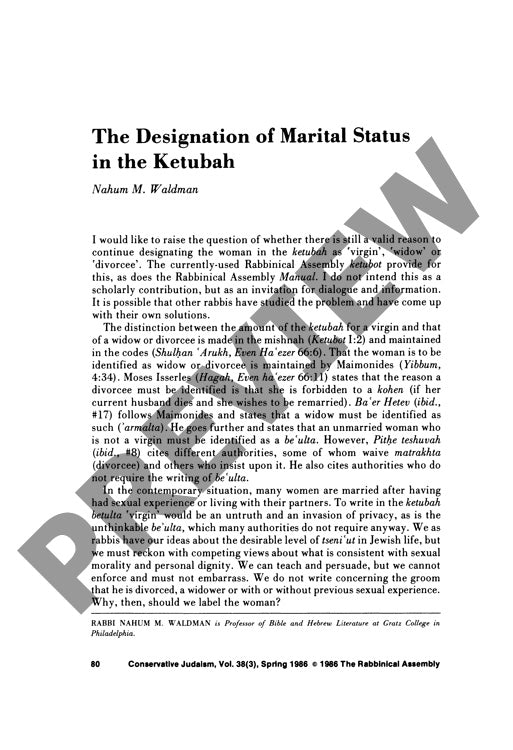The Designation of Marital Status in The
Couldn't load pickup availability
For centuries, Jewish marriage contracts (ketubot) have explicitly labeled women as "virgin," "widow," or "divorcee" - a practice that stands increasingly at odds with modern values of privacy and gender equality. Through analysis of classical halakhic sources, including the Mishnah, medieval codes, and writings of Maimonides and Moses Isserles, these marital status designations emerged primarily to establish different monetary amounts for virgin versus non-virgin brides and to enforce restrictions on kohanim marrying divorced women. Evidence from Cairo Genizah ketubot, documented by Mordechai Friedman, reveals alternative historical practices where some contracts avoided explicit status labels, instead using dignified terms like "lady" or "bride." Contemporary social changes and Conservative movement rulings regarding kohen status have largely nullified the original legal justifications for these distinctions. Given this evolution, modern ketubot can and should eliminate these potentially offensive designations in favor of relational terminology that emphasizes partnership and covenant rather than sexual history, thereby preserving the ritual's integrity while advancing gender equality and personal dignity in Jewish marriage documentation.

More Information
-
Physical Description
-
Publication Information
Published 1986
ISBN
-
Publication Credits
Nahum Waldman

